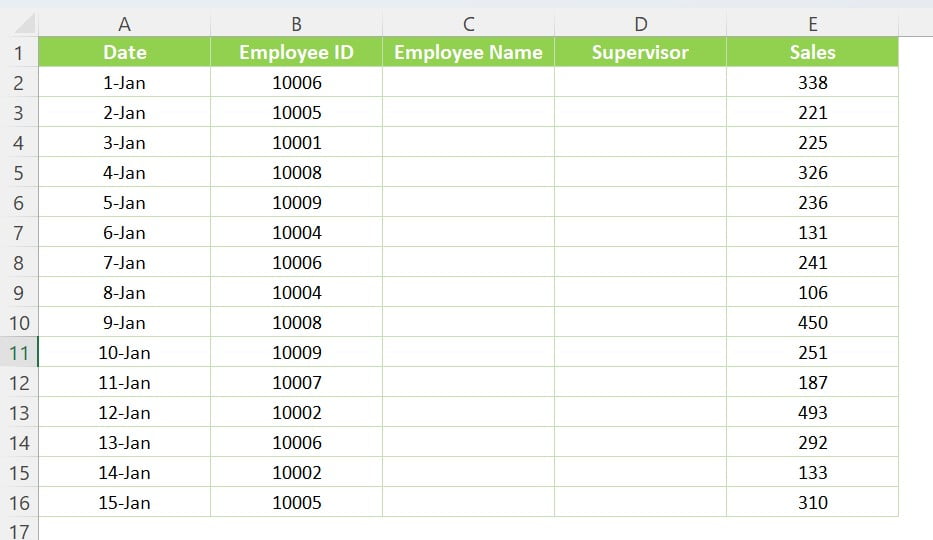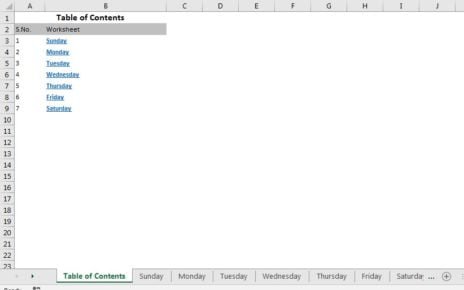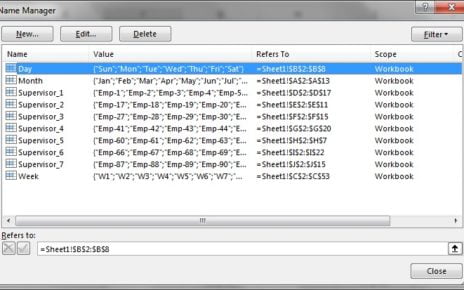Excel, a powerful tool for data manipulation and analysis, has a range of functions and features, but one that stands out is the VLOOKUP function. VLOOKUP, a vertical lookup, is a function that searches for a value in the left-most column of a data range, and then returns a value in the same row from a column you specify. In this article, we will guide you How to Automate VLOOKUP in Excel with VBA (Visual Basic for Applications), which allows for task automation in spreadsheets, a sought-after skill in the world of data analysis.
How to Automate VLOOKUP in Excel with VBA?
VBA is a programming language developed by Microsoft to automate tasks in Excel and other Office applications. Macros are sequences of instructions written in VBA, which make it possible to automate complex and repetitive tasks. Developing macros in Excel has become a popular method for creating more efficient workbooks.
VLOOKUP Automation Example
Let’s delve into an Excel VLOOKUP example where we automate the function using Excel VBA.
Suppose we have two worksheets in a workbook – the “Sales Data” worksheet, and the “Employee Master” worksheet. In the “Sales Data” worksheet, we have data columns for Date, Employee ID, Employee Name, Supervisor, and Sales. The Employee Name and Supervisor columns are empty, and we need to fill these using the VLOOKUP function based on the Employee ID.
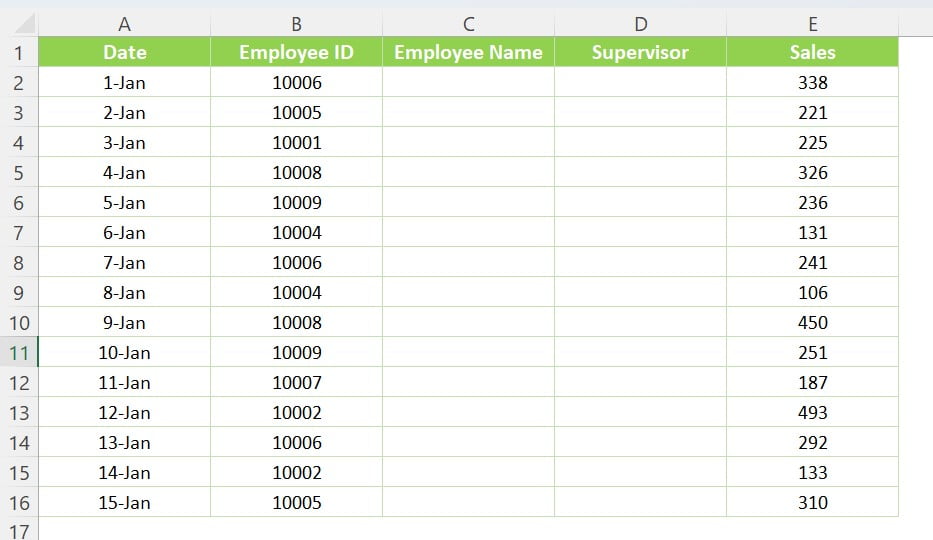
The “Employee Master” worksheet, on the other hand, holds the Employee ID, Employee Name, and Supervisor data.
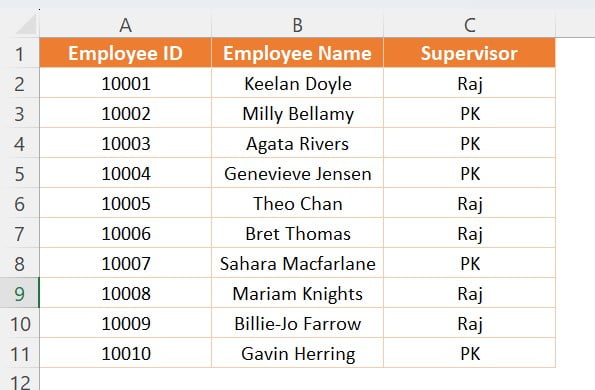
Let’s break down how we can automate this VLOOKUP process using VBA and macros.
Automating VLOOKUP using Macros in Excel – Method 1
The first method uses VBA to write and copy a VLOOKUP formula into the appropriate cells. Here’s the code and its breakdown:
Sub VLOOKUP_Formula_1()
Dim sh As Worksheet
Set sh = ThisWorkbook.Sheets("Sales Data")
Dim lr As Integer
lr = sh.Range("A" & Application.Rows.Count).End(xlUp).Row
sh.Range("C2").Value = "=VLOOKUP(B2,'Employee Master'!A:C,2,0)"
sh.Range("D2").Value = "=VLOOKUP(B2,'Employee Master'!A:C,3,0)"
sh.Range("C2:D" & lr).FillDown
sh.Range("C2:D" & lr).Copy
sh.Range("C2:D" & lr).PasteSpecial xlPasteValues
Application.CutCopyMode = False
End Sub
- Dim sh As Worksheet: Declares a variable ‘sh’ of type Worksheet.
- Set sh = ThisWorkbook.Sheets(“Sales Data”): Sets the ‘sh’ to refer to the “Sales Data” worksheet.
- Dim lr As Integer: Declares a variable ‘lr’ of type Integer.
- lr = sh.Range(“A” & Application.Rows.Count).End(xlUp).Row: Sets ‘lr’ to the last row number in the ‘A’ column.
- sh.Range(“C2”).Value = “=VLOOKUP(B2,’Employee Master’!A:C,2,0)”: Writes the VLOOKUP formula in cell C2 to look up the Employee Name.
- sh.Range(“D2”).Value = “=VLOOKUP(B2,’Employee Master’!A:C,3,0)”: Writes the VLOOKUP formula in cell D2 to look up the Supervisor name.
- sh.Range(“C2:D” & lr).FillDown: Copies the formula down from cells C2 and D2 to the last row ‘lr’.
- sh.Range(“C2:D” & lr).Copy: Copies the range with the formulas.
- sh.Range(“C2:D” & lr).PasteSpecial xlPasteValues: Pastes the results (values), not the formulas.
- Application.CutCopyMode = False: Clears the clipboard.
Automating VLOOKUP using Macros in Excel – Method 2
The second method directly applies the VLOOKUP function using the VBA Application.VLookup function. Here’s the code and its breakdown:
Sub VLOOKUP_Formula_2()
Dim sh As Worksheet
Set sh = ThisWorkbook.Sheets("Sales Data")
Dim emp_sh As Worksheet
Set emp_sh = ThisWorkbook.Sheets("Employee Master")
Dim lr As Integer
lr = sh.Range("A" & Application.Rows.Count).End(xlUp).Row
Dim i As Integer
For i = 2 To lr
sh.Range("C" & i).Value = Application.VLookup(sh.Range("B" & i), emp_sh.Range("A:C"), 2, 0)
sh.Range("D" & i).Value = Application.VLookup(sh.Range("B" & i), emp_sh.Range("A:C"), 3, 0)
Next i
End Sub
- Dim emp_sh As Worksheet: Declares a new worksheet variable ’emp_sh’.
- Set emp_sh = ThisWorkbook.Sheets(“Employee Master”): Sets ’emp_sh’ to refer to the “Employee Master” worksheet.
- Dim i As Integer: Declares an integer variable ‘i’ to be used as a counter.
- For i = 2 To lr: Starts a loop from the second row to the last row ‘lr’.
- sh.Range(“C” & i).Value = Application.VLookup(sh.Range(“B” & i), emp_sh.Range(“A:C”), 2, 0): Uses the VLookup function to get the Employee Name from the “Employee Master” worksheet and writes the value into the cell ‘C’ in the current row ‘i’.
- sh.Range(“D” & i).Value = Application.VLookup(sh.Range(“B” & i), emp_sh.Range(“A:C”), 3, 0): Uses the VLookup function to get the Supervisor name from the “Employee Master” worksheet and writes the value into the cell ‘D’ in the current row ‘i’.
- Next i: Ends the loop, moving to the next row until ‘lr’.
Advantages of Automating VLOOKUP in Excel using VBA
- Time-saving: Automation via VBA can save you a significant amount of time when dealing with large datasets.
- Increased accuracy: Automated processes minimize the chance for human errors.
- Improved efficiency: By automating the VLOOKUP function, you can streamline your workflow and make your spreadsheets more efficient.
Opportunities for Improvement
While VBA is an extremely powerful tool, it requires some level of programming knowledge which may be a hurdle for non-technical users. Therefore, developing more user-friendly interfaces or simplified scripting languages for Excel automation could be an opportunity for improvement.
Best Practices for Automating VLOOKUP in Excel using VBA
- Use descriptive variable names: It makes your code easier to understand and maintain.
- Comment your code: This allows you and others to understand what each part of the code is doing.
- Error Handling: Add error handling routines to your VBA code to handle any unexpected errors.
Conclusion
In conclusion, embarking on the journey of understanding and implementing task automation using macros and VBA, particularly automating VLOOKUP in Excel, undoubtedly unveils a realm of enhanced efficiency and productivity. Admittedly, it may seem complex initially. However, with steady, hands-on practice using excel automation examples, such as the ones we’ve provided, one can certainly master developing macros in Excel. Consequently, this mastery will simplify the handling of extensive data sets. Then, moving forward, with targeted Excel VLOOKUP training, the vertical lookup in Excel, in essence, transforms from a simple function to a dynamic tool. As a result, this powerful tool can streamline your entire work process. So, in light of this, continue to explore, learn, and push boundaries. Ultimately, this will allow you to fully harness the immense potential of Excel and elevate your proficiency to new heights.
Frequently Asked Questions
Q. What is VLOOKUP in Excel?
A. Essentially, VLOOKUP is a built-in function in Excel that is designed to search for a specific value in the left-most column of a defined range. Subsequently, it returns a value from the same row in a column that you specify. Therefore, it becomes an invaluable tool when you need to compare data between different sections of your worksheet or even different worksheets entirely.
Q. What is VBA in Excel?
A. In essence, VBA, or Visual Basic for Applications, is a robust programming language developed by Microsoft. Specifically, it is utilized to automate tasks in Excel and other Office applications. So, whether you’re looking to automate repetitive tasks, or develop complex spreadsheets with advanced functionality, VBA is a powerful tool to have in your arsenal.
Q. Why should I automate VLOOKUP using VBA?
A. Automating VLOOKUP using VBA can bring significant benefits to your workflow. Firstly, it saves a tremendous amount of time, especially when you’re dealing with large datasets. Secondly, it increases the accuracy of your work by minimizing the chance of human errors. Consequently, these advantages make VBA a valuable tool for any data analyst or anyone working regularly with Excel.
Q. What are the steps to create a Macro in Excel?
A. In order to create a Macro in Excel, you would first press ‘Alt + F11’ to open the VBA editor. Then, you would select ‘Insert > Module’ to create a new module. Following this, within the new module, you would write your desired VBA code. Lastly, to run your code, you can either press ‘F5’ or select ‘Run > Run Sub/UserForm’. Hence, creating a macro in Excel is a straightforward process, made even easier with a basic understanding of VBA.
Q. Can I use VLOOKUP to match values from different worksheets?
A. Absolutely, VLOOKUP can indeed be used to match values across different worksheets. As demonstrated in the examples provided in this article, the function has the capacity to search for specific values across numerous worksheets and subsequently return corresponding data. This makes it a versatile and powerful tool in Excel.
Q. Do I need to have programming skills to use VBA in Excel?
A. While it might seem that extensive programming skills are necessary to use VBA in Excel, that isn’t entirely true. Initially, you need only a basic understanding of programming logic to start automating tasks in Excel using VBA. Over time, as you gain experience and deepen your knowledge, you will be able to harness the full power of VBA to develop more complex and sophisticated solutions.
Visit our YouTube channel to learn step-by-step video tutorials
